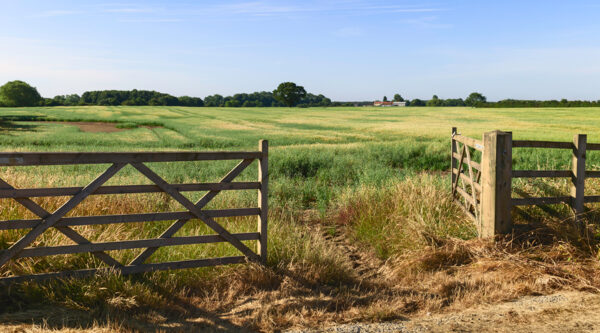

There is an increasingly active criminal market for farm machinery and technological equipment which is resulting in more – and more organised and targeted – thefts.
The NFU reported that the cost of rural theft in the UK was up by 22% from 2022 to 2023, and that 70% of 175 surveyed agents knew farmers who had been victim to repeated rural crime.
Every agricultural business should be concerned by these alarming statistics, and questioning whether the insurance cover it has is adequate to respond to any theft that might occur. Anyone presenting an insurance claim following a theft should expect its insurer to insist on all conditions of cover being met, and prove compliance. Therefore, it is essential that every business understands what exactly is covered by its insurance policy, and what actions need to be taken, both before and after the theft, to ensure a claim is met and what the insurer will pay if the claim is successful.
What to consider
Below is a note of general points to consider and some practical thoughts on how to reduce the risk of theft. We recommend that after reading this note you review your insurance policies and practices on site.
Is the equipment actually yours at the point of theft?
If you have an indemnity insurance policy, which is the most common type, you will generally only be entitled to receive any monies payable under the policy if the risk or title in the equipment was in your name at the time of the theft.
An insurer is not required to pay insurance proceeds to a policyholder if you don’t have an insurable interest. Beware that some insurers may use a lack of insurable interest to avoid paying a legitimate claim. You have an insurable interest if you would suffer a direct financial loss upon the loss – destruction or theft – of the property insured.
Is the equipment covered by the insurance policy?
- Your insurer will want to know what equipment is to be covered and its value when you take out or renew your policy in order for it to be insured. Make sure the information you provide is comprehensive and that values are regularly assessed to avoid under or over insurance. Update that information when equipment is purchased or sold. The premium is based on the insured value.
- You may be required to prove that you took reasonable steps to secure and safeguard equipment at the time of the theft. Your insurer may have imposed condition precedents in this respect. A condition precedent is a term in a contract which provides that the agreement, or certain parts of the agreement, will only come into force if and when certain conditions are satisfied. In relation to insurance contracts, a breach of a condition precedent to risk or liability will likely lead to an insurer rejecting a claim, regardless of whether prejudice is suffered, or to decline cover entirely. When it comes to evidence, make sure you properly understand the requirement of any condition precedent and comply with its terms, and ensure you are in a position to prove that the term was complied with.
- You may be required to prove that the equipment was maintained in good working order and, if used on the roads, in a roadworthy condition. Evidence can come directly from you, but it’s better if you can rely on pre-existing documents like service records, maintenance records and maintenance regimes.By way of example: if a tractor is left in a garage for 24 months without being used or serviced, an insurer may not pay out. If, on the other hand, that tractor is left in a garage for 24 months but has records which show it was regularly serviced and in roadworthy condition, the insurer is more likely to pay out. Please be aware that s11 Insurance Act 2015 provides that an insurer may not rely on a policyholder’s breach of a risk mitigation term to reject a claim if the breach could not have increased the risk of the loss.
- You will need to notify your insurer of your intention to make a claim within a fixed period of time after discovering the theft. Typically, an insurance policy will include terms often drafted as condition precedents that dictate when a claim, or potential claim, should be notified to the insurer on risk.For example, a policy may contain an ‘immediate’ notification clause; ‘as soon as practicable’ in the circumstances, which applies to all claims, as well as any impending prosecutions or inquests. Failure to do so could result in your insurer not admitting the claim or not providing an indemnity in respect of the insured event, in this case the theft. Make sure you are aware of when a claim must be notified.
- You will need to report the theft to the police and cooperate with them and other investigators.
What will your insurer pay out?
It depends. They will probably pay the market value of the equipment, which will take into account depreciation, an amount agreed or a limit specified in the policy schedule, or the cost of a new replacement. However, this will probably only be in limited circumstances, if purchased in the last 12 months for example.
Market value will take into account condition and depreciation: the insurer may make their own calculation or rely on the figure in your business accounts. They may provide you with interim replacement equipment.
What practical steps can you take to minimise the risk of theft?
-
-
-
- Install visible video and audio security cameras with light and alarm functions when triggered
- Install a hotline alarm system which sends a notification to the police when triggered.
- Install location trackers and theft alarms on equipment
- Risk assess equipment and buildings, and action the control measures you identify. Review the risk assessment regularly, including when there is a significant change or new equipment and update it as necessary
- Implement and enforce a system of keeping equipment and building keys in a specified secure location, away from the equipment and buildings
- Know who has access to what and when
- Keep locks and gates in good condition by regularly inspecting and repairing any weak points
- Keep records to evidence the existence and functioning of all of the above
- Engage with your local community so that they know how to tell you if they see something suspicious.
-
-
Check your policy to see whether insurers have imposed conditions on security and safeguarding.
More generally
Aviva estimates that 50% of businesses are uninsured. Are you one of these? If so, addressing this sooner rather than later is critical as doing nothing could have serious implications for your business. If not, do you review your circumstances and policies regularly?
Levels of risk within a business will change regularly and it is the policyholder’s responsibility to keep their insurance up to date.
Check that you are going to be covered for everything you need, and that you properly understand when conditions, warranties and exclusions will apply. Make sure the terms of your policy are properly explained to you. Be very wary of standard “off the shelf” policies which may well not cover the particular risks to your business. Policyholders have a duty of fair presentation and must make sure that all the relevant facts are provided so that the risk can be properly assessed. Update insurers whenever there is an alteration to risk or when a new risk is taken on.
Above all, manage risk appropriately. It’s an investment not a cost; to both reduce the chances of something going wrong and minimise the damage when it does.
Insurance cover may be a standard overhead for many businesses, but have you got the right cover in place? Are all your risks included? Is the value of your cover up to date and accurate?










